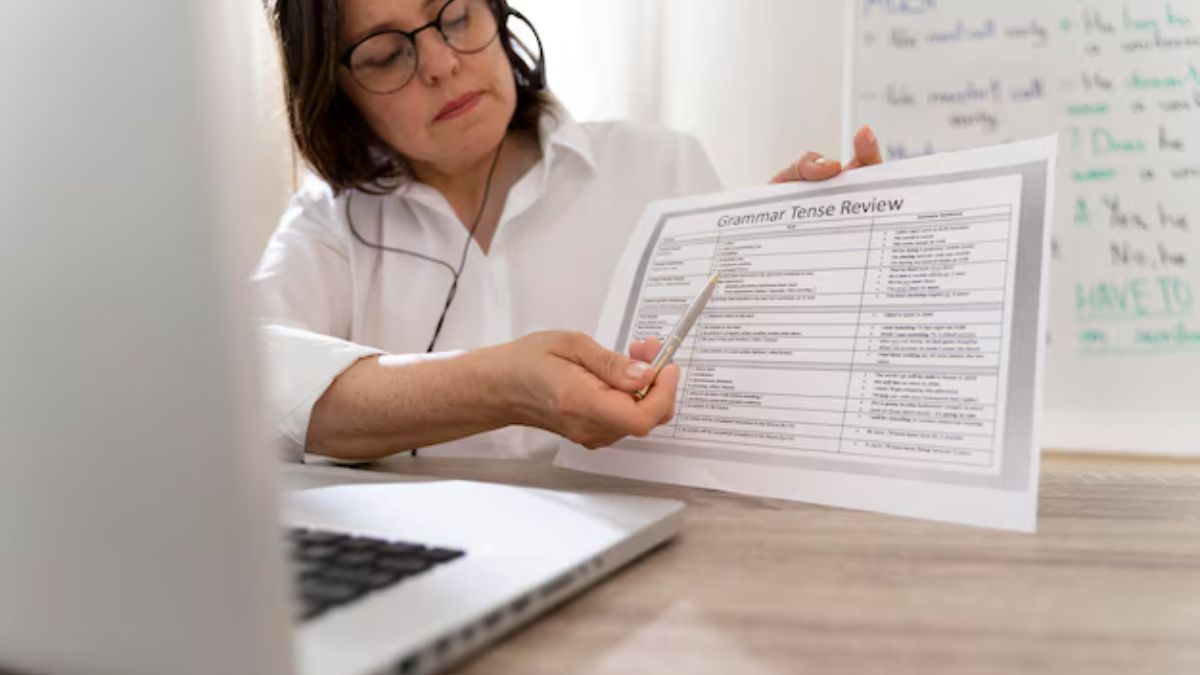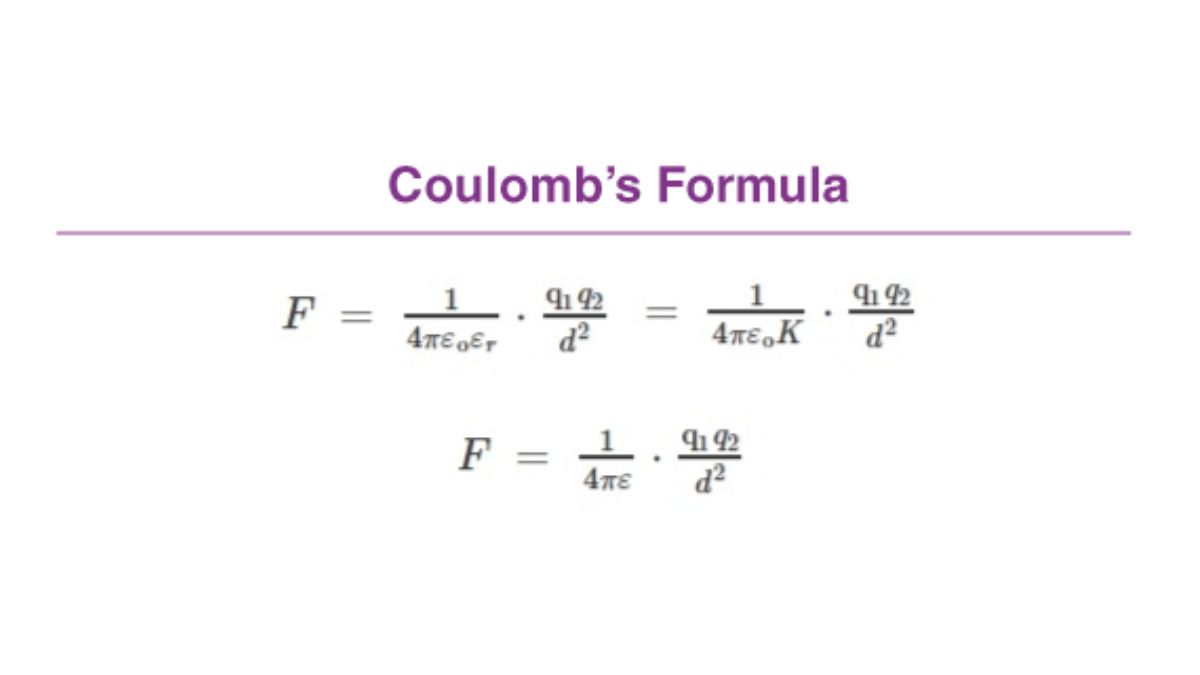EDUCATION
Wendy Etris: The Inspiring Educator Behind AJ Styles’ Success

Wrestling fans around the globe know AJ Styles—a celebrated titan in the professional wrestling industry. Known for his unmatched athleticism, captivating charisma, and versatility in the ring, Styles is heralded as one of the best to ever do it. However, behind every success story lies an influential figure, and for AJ Styles, that person is none other than Wendy Etris.
More than just the wife of a wrestling icon, Wendy Etris is an unsung hero whose role transcends the boundary of home and heart. She’s an impactful educator, mother, and a steadfast supporter of a high-octane wrestling career. This article shines a spotlight on Wendy Etris—the inspiring educator—and her role in shaping the success story of her husband, AJ Styles, while anchoring a thriving personal and professional life.
Who is Wendy Etris?
Wendy Etris is an exceptional woman who has intertwined passion and profession with grace. A dedicated elementary school teacher in Georgia, Wendy has spent years nurturing and educating young minds. Her commitment to her role as an educator speaks volumes about her nurturing nature and her ability to inspire those around her.
Married to AJ Styles (real name Allen Neal Jones) since 2000, Wendy is not only a life partner to one of the world’s most prominent wrestlers but also the sturdy pillar of support that allows him to pursue his dreams fearlessly.
A Heart for Teaching
Wendy’s career in teaching is a testament to her innate ability to guide and nurture. Working with children during their formative years is no small feat, yet Wendy’s dedication to fostering growth and understanding in the classroom is what sets her apart. She is celebrated not only for her patience but also her empathetic approach, creating a lasting impact on her students’ lives.
Teaching requires adaptability, structure, and care—all qualities Wendy has honed to perfection. These attributes extend far beyond the classroom, influencing her role as a mother and a partner to a global superstar.
Wendy’s Role in AJ Styles’ Journey
While AJ Styles dazzles millions inside the ring, Wendy’s influence is a key driving force behind his success. Here’s how Wendy Etris has left an indelible mark on AJ Styles’ career and life.
1. Foundation of Support
Few careers demand the level of commitment, resilience, and physical toll that professional wrestling does. Wendy has been the steadfast partner in AJ’s life, offering unwavering emotional and logistical support. Her role in balancing their family life with his demanding travel schedule is nothing short of masterful.
2. Grounding Influence
Success in any high-profile industry often comes with its set of challenges, from overwhelming schedules to the lure of fame. Wendy serves as AJ’s grounding force, ensuring he remains deeply connected to his roots. She holds him accountable to family values while being his emotional anchor during both triumphs and trying times.
3. Motivator
Behind every mountain AJ Styles has climbed, Wendy has been cheering along the way. Her belief in his abilities is deeply motivating. Whether it’s supporting his decision to wrestle internationally or cheering from the sidelines during major matches, Wendy has always been AJ’s No. 1 fan.
4. Balancing Family Life
Together, Wendy and AJ Styles share four children. Balancing a bustling family life with AJ’s wrestling career is a complex puzzle Wendy has masterfully solved. Her ability to act as the glue that holds the family together empowers AJ to focus on delivering legendary performances.
Wendy Etris’ Impact Beyond Family
It’s not just her presence in AJ’s life that deserves the spotlight—Wendy Etris is an achiever in her own right. As an elementary school teacher, Wendy touches countless lives through education. Much like the way AJ electrifies a crowd, Wendy brings her own brand of inspiration by shaping young minds and helping students become the best versions of themselves.
An Educator Who Cares
Wendy doesn’t just teach subjects; she instills values. Her students remember her not only for the lessons she teaches but for the encouragement, kindness, and genuine care she exudes daily. Much like AJ Styles’ ability to connect with fans globally, Wendy connects with her students on a profoundly human level, leaving a lasting impression.
A Role Model for Work-Life Balance
Wendy exemplifies what it means to manage a career while keeping family at its core. Many professionals, particularly women, look up to Wendy for her ability to juggle the roles of a working professional, a mother, and a supportive partner.
What We Can Learn from Wendy Etris
Wendy Etris inspires us to rethink the idea of success and support. Here are some key takeaways from her story.
1. Strong Relationships Amplify Success
For AJ Styles, having Wendy as a partner has been nothing short of revolutionary. Wendy showcases the importance of mutual understanding, patience, and teamwork in a relationship.
2. Impact Isn’t Measured by Spotlight
While Wendy may not be in the public eye as frequently as her husband, her impact on both his career and the lives of her students is profound. Her story reminds us that meaningful change often happens behind the scenes.
3. Balance is Key
Wendy demonstrates the importance of striking a balance between personal and professional responsibilities without compromising on one’s values or passions.
Celebrating the Power Behind the Spotlight
Wendy Etris stands as a reminder of the countless people who work tirelessly in the background to ensure success for others. Her role in AJ Styles’ career and her influence as an educator emphasize the value of support, dedication, and selflessness.
While the wrestling world continues to celebrate AJ Styles’ achievements, it’s important to recognize and applaud the contributions of Wendy Etris—a woman who embodies grace, resilience, and inspiration.
EDUCATION
13 Essential Elements to Include in Your Walden University Dissertation

Dissertation is the heart of earning a postgraduate degree from Walden University. Generally, students write Walden University dissertations at the end of their program to contribute to the research field. This academic document should be the original and authentic research work conducted by students to demonstrate their critical analysis and research skills.
However, most students fail to write this important academic paper. According to the report by DiscoverPhDs, only 5% of students successfully submitted their dissertations, while 95% of students need to amend their academic documents. The prime reason for this low submission rate is the lack of guidance about the crucial elements of the dissertation. Therefore, we have developed this guide, which shares all the essential aspects of the Walden University dissertation.
Continue reading to explore these components.
13 Essential Elements to Include in Walden University Dissertation
There is no universal structure for a dissertation. Each university has distinctive guidelines for thesis writing, which further vary depending on the department and supervisor. Likewise, Walden University has a unique dissertation structure that you need to follow to score higher ac academic grades. If you ever feel confused about what to include in it, get dissertation writing help online from professionals who know how to write a successful academic document.
Besides this, you can follow this guide to explore what to include in your document. Let’s get started.
1. Title Page
The title page is the first impression of your dissertation that comprises the following:
- Title of your research
- Your and your institution’s name
- Your supervisor’s name
- Degrees program
- Submission date
Below are some writing tips for formatting this page according to the guidelines.
- Write the research title in the title case.
- All elements should be centre-aligned.
- Write your name after the title and before the degree program.
2. Acknowledgement
The acknowledgement section is optional in the thesis guidelines. This section provides you with a space to thank the people or organisations who support you in your research journey. Acknowledge is the only section where you can use informal language or personal pronouns.
Additionally, sort out people whom you want to thank into three categories.
- Major Thank: This thank you is given to the people without whom your research would not have been completed.
- Big Thank: It goes to the people who provided you with intellectual support.
- Minor Thank: Minor thanks to anyone else who provided you with moral support.
3. Abstract
An abstract is the short summary of your research work that appears at the beginning of your document. This section gives your reader an idea of what your paper is going to cover. Generally, an abstract consists of one paragraph and is 300-400 words long, stating the major points of your Walden University dissertation.
Below are some tips for writing a successful abstract.
- Before writing your abstract, read others’ abstracts carefully.
- Pinout two or three keywords or phrases for each chapter and add them to the abstract.
- Avoid long sentences, jargon, and passive sentences.
4. Table of Contents
The table of contents contains a skeleton of your dissertation, which is added at the beginning of your dissertation. It includes the chapters’ names, headings, and subheadings corresponding to the page numbers. Further, it enables your readers to navigate your document easily. You must also list all the supplementary sections, such as appendices, references, etc., in your table of contents.
5. List of Figures and Tables
Like the acknowledgement, this section is also not mandatory. Still, it is good to add it to your academic document as the name shows a list of figures and tables, including the titles or captions of all the visual aids that you have added to your research work. You can consider it as the table of contents for charts and tables.
6. Introduction
The introduction is the core chapter of your Walden University dissertation and is the beginning of your research document. This chapter introduces your research topic and sets up the background for your work. In this section, you just simply state your thesis statement and outline your entire document.
Follow the tips below while you structure the introduction chapter.
- State your research topic with background information.
- Narrow down your subject matter from broad to narrow topic.
- Outline the flow of your work document.
7. Literature Review
A literature review is the section where you add all the relevant information that you have gathered from primary and secondary sources. In this section, you not only summarise the key findings of the existing research but also highlight the flaws or drawbacks.
Check out the below considerations while working on this chapter.
- Add only relevant sources.
- Evaluate the credibility of your sources.
- Draw a connection between each source.
8. Methodology
The methodology of the dissertation shows how you conducted your research and allows the readers to check the credibility of your work. Generally, in this section, you state what method you have used for collecting information, how you analysed the data, and why you chose the specific method.
A good methodology section generally includes the following:
- Research design
- Data collection method
- Details about your research
- Data analysis method
- A justification for choosing the method
9. Results
The results chapter is the most important element of your Walden University dissertation, where you thoroughly explore your research findings. This is the place where you add the original research results with the help of visual aids, charts, or graphs.
Additionally, in the results chapter, you will state whether your findings support your initial research hypothesis or not. Remember to relate your results with your research question to make your research work more credible and authentic for readers.
10. Discussion
In the results chapter, you only state your findings without explaining them. You must contextualise your results in the discussion chapter. Furthermore, you will interpret your results and check whether they fit into the theoretical framework. You must also refer back to your source material and highlight how your findings support or contradict the existing research work.
While writing this section, ask yourself the following questions:
- What do your results indicate?
- Why do your findings matter?
- What are the limitations of your work?
11. Conclusion
Most students mix the conclusion section with the results section, but both these chapters have different purposes. In the conclusion chapter, you will summarise all the key points of your thesis and briefly answer the main question of your research.
Furthermore, this final chapter of your thesis wraps up all your work without confusing your readers. To write this section or a complete, well-researched paper, you can also contact the best-rated dissertation writing services in the UK and write it successfully. Professional writers guide you at every stage of writing your dissertation for Walden University.
12. References
It is important to add the reference list at the end of your Walden University dissertation. This section will make your work more credible as your readers will know you have conducted in-depth research for your work. Walden University follows the APA style for references, so ensure that you have added all the references according to the guidelines.
13. Appendices
The appendices are the last section of your thesis, where you will add all the additional information that is not directly related to your research work but can guide your readers in understanding your work. Appendices may contain interviews, transcripts, or surveys; just make sure these are indirectly related to your work.
What is a Good Walden University Dissertation?
A good dissertation comprises the core elements, with correct formatting and tone of writing. Therefore, when you write a dissertation for your degree completion at Walden University, ensure that you have read the guidelines provided by the university.
Moreover, follow the order of the chapters and all other supplementary sections to make your document flawless and earn your degree successfully.
Conclusion
Writing a Walden University dissertation is not a piece of cake. It requires months of hard work, in-depth research, and strategic planning. However, the most important thing is knowing the essential elements of the dissertation. Therefore, in this article, we have compiled a list of all these elements to help you out.
From the title page to the appendices, we have enlisted all of them according to the order given by Walden University. With this, we have shared some tips for effectively adding each section in this guide that will surely help you in your writing journey.
Author Bio
Alexander Richardson is an expert dissertation writer who aims to help students transform complex ideas into compelling narratives. He uses his expertise to assist researchers in pursuit of their research journey. With mastering the art of words, he has written numerous ground-breaking dissertations on various research topics.
References
- https://www.discoverphds.com/advice/doing/phd-failure-rate
- https://academicguides.waldenu.edu/formandstyle/programs/phd
EDUCATION
Navigating UVA MyChart: Tips and Tricks for New Users

Navigating the world of healthcare can sometimes feel overwhelming. With appointments, prescriptions, and medical records to manage, it’s easy to lose track of everything. Enter UVA MyChart—a digital tool designed to simplify your health management experience. Whether you’re a first-time user or just looking for ways to optimize your experience, this guide is here to help you unlock all that UVA MyChart has to offer. From setting up your account to troubleshooting common issues, we’ve got tips and tricks that will make navigating your healthcare journey smoother than ever before. Let’s dive in!
What is UVA MyChart?
UVA MyChart is a secure online portal that gives patients access to their health information anytime, anywhere. It’s part of the University of Virginia Health System’s commitment to enhancing patient engagement and communication.
Through this platform, users can view test results, manage appointments, and communicate directly with their healthcare providers. The convenience it offers means you don’t have to wait for phone calls or paperwork.
Whether you’re tracking your medications or accessing educational resources about your conditions, UVA MyChart puts vital information at your fingertips. This empowers you to take charge of your health like never before.
With user-friendly navigation and a mobile app option, managing your medical needs becomes straightforward and efficient. It’s not just about staying informed; it’s about being actively involved in your care journey.
Benefits of Using UVA MyChart
UVA MyChart offers a convenient way to manage your healthcare needs. Users can access their medical records anytime, making it easier to stay informed about their health.
Scheduling appointments through the platform is straightforward. You can choose dates and times that fit your busy lifestyle without needing to call the office.
Another major benefit is prescription management. Need a refill? Just a few clicks will get you what you need without any hassle.
Communication with healthcare providers becomes seamless too. You can send messages directly, ask questions, or discuss concerns in real time.
UVA MyChart keeps all your health information in one place. This centralization simplifies tracking test results and managing follow-up care for better health outcomes.
Getting Started: Setting Up Your Account
To get started with UVA MyChart, you first need to create your account. Head over to the UVA MyChart website or download the mobile app for convenience.
Click on “Sign Up” and follow the prompts. You’ll need some personal information, including your date of birth and email address. Make sure to use an email you check regularly; it will be vital for notifications.
After entering your details, you’ll receive a verification link via email. Click that link to confirm your identity and activate your account.
Once set up, take a moment to explore the dashboard. Familiarizing yourself with its layout can make navigating easier in future visits.
Remember to keep your login credentials secure but accessible when needed. Setting up two-factor authentication is also wise for added security against unauthorized access.
Understanding the Features and Functions
UVA MyChart offers a user-friendly interface packed with essential features. You can easily access your medical records, including lab results and immunization history. This transparency helps you stay informed about your health.
Scheduling appointments is another convenient function. Whether it’s a routine check-up or a specialist visit, just a few clicks will get you on the calendar.
Medication management stands out as well. You can request refills online and receive reminders for upcoming doses directly through the app.
Secure messaging allows for effective communication with your healthcare providers. Ask questions or discuss concerns without needing to make an office visit.
Bill payment is simplified within UVA MyChart’s system. Review statements and settle bills at your convenience—all in one secure location, enhancing both flexibility and peace of mind regarding your healthcare experience.
Tips for Making the Most of UVA MyChart
To fully utilize UVA MyChart, start by customizing your dashboard. Prioritize the features you use most often for quicker access.
Take advantage of appointment scheduling. You can view available time slots and book directly without waiting on hold. It’s convenient and saves time.
Don’t forget to explore the messaging feature. Communicating with your healthcare provider is straightforward and secure, allowing you to ask questions or discuss concerns easily.
Another handy tip is to keep track of medication refills through MyChart. Set reminders for when medications need renewing, so you never run out unexpectedly.
Utilize health records storage effectively by uploading relevant documents like lab results or vaccination records. This ensures all vital information stays in one place, making it easier during appointments or consultations.
Engage with educational resources offered through the platform; they can provide valuable insights into managing your health proactively.
Troubleshooting Common Issues
Sometimes, even the most reliable platforms can have hiccups. If you find yourself locked out of your UVA MyChart account, don’t panic. A quick password reset usually does the trick.
Another common issue is trouble accessing test results or messages. If this happens, check your notification settings first. Make sure you’re receiving alerts for new updates.
If pages aren’t loading properly, try clearing your browser cache or switching to a different device. Sometimes an outdated browser can be the culprit behind those frustrating loading screens.
If you encounter error messages while scheduling appointments, verify that all required fields are filled in correctly. Missing information often leads to these annoying roadblocks.
Keep these tips handy to make navigating through issues smoother as you use UVA MyChart more frequently!
Conclusion
Navigating the world of healthcare can be daunting, but UVA MyChart makes it easier. With its user-friendly interface and extensive features, patients have a powerful tool right at their fingertips. By understanding what UVA MyChart offers and how to set it up, you empower yourself to take control of your health information.
Remember that utilizing all available resources is key. From scheduling appointments to accessing test results, every feature serves a purpose in enhancing your healthcare experience. If you encounter any issues or challenges along the way, there are solutions readily available.
Embrace this technology for better communication with your providers and improved management of your health needs. Whether you’re booking an appointment or reviewing lab results from home, UVA MyChart is designed to make these processes seamless and efficient.
Dive into the benefits today, explore its features thoroughly, and enjoy a more engaged approach to managing your health journey with UVA MyChart by your side.
EDUCATION
Visualizing Coulombs Law: How Electric Charges Interact

Imagine a world where invisible forces govern the dance of charged particles. This is not just science fiction; it’s the reality described by Coulombs Law. Named after French physicist Charles-Augustin de Coulomb, this fundamental principle explains how electric charges interact with one another across distances. Whether you’re intrigued by static electricity or captivated by lightning strikes, understanding Coulombs Law unlocks a deeper appreciation for the forces shaping our universe.
As we delve into this fascinating subject, you’ll discover how electric charges create attractions and repulsions, influenced significantly by distance. With vivid visualizations and real-world applications, we’ll bring these concepts to life and clear up common misconceptions along the way. So buckle up as we journey through the electrifying realm of Coulombs Law!
Understanding Electric Charges
Electric charges are fundamental to the universe, influencing everything from atomic structures to large-scale phenomena. They come in two types: positive and negative. Protons carry a positive charge, while electrons have a negative one.
Like charges repel each other, whereas opposite charges attract. This interaction forms the basis of many physical processes around us. For instance, it’s what keeps electrons orbiting around atomic nuclei.
The unit of electric charge is the coulomb (C). A single electron has a charge of approximately -1.6 x 10^-19 coulombs. Understanding these nuances helps illuminate how electrical forces work at both microscopic and macroscopic levels.
In everyday life, electric charges manifest in numerous ways—from static cling on clothes to lightning strikes during storms. Recognizing their role makes it easier to appreciate how they govern our interactions with technology and nature alike.
The Relationship Between Distance and Force
The strength of the force between two electric charges is intricately linked to their distance apart. As charges move closer, the force they exert on each other intensifies.
Coulombs Law illustrates this principle with its inverse square relationship. When distance doubles, the force diminishes to a quarter of its original strength. This dramatic change can be surprising.
Consider two positively charged particles; as they approach one another, you can feel that push away more strongly than before. Conversely, if they’re far apart, their interaction weakens significantly.
This concept isn’t just theoretical; it’s fundamental in understanding everything from atomic structures to electric fields in technology and nature. The balance between attraction and repulsion defines countless interactions around us every day.
Visualizing Coulombs Law through Graphs and Diagrams
Visualizing Coulombs Law can significantly enhance our understanding of electric forces between charged particles. Graphs and diagrams allow us to see relationships more clearly.
A force versus distance graph illustrates how the force changes as two charges move apart or closer together. The inverse square relationship shows that as distance increases, the force decreases dramatically.
Diagrams showcasing electric field lines offer another perspective. They reveal how charges interact visually, demonstrating attraction and repulsion in a dynamic way. The density of these lines indicates strength; closer lines mean stronger forces at play.
Additionally, vector representations help depict direction along with magnitude. Arrows indicate the push or pull experienced by each charge, enriching our grasp of interaction dynamics.
Using these visual tools fosters deeper engagement with Coulombs Law concepts while making complex ideas more accessible for learners at all levels.
Real-World Applications of Coulombs Law
Coulombs Law plays a vital role in various fields, shaping our understanding of electric forces. In electronics, it helps design circuits and components like capacitors and resistors.
In chemistry, the law is fundamental for predicting interactions between charged particles. It explains how atoms bond together and why certain substances have distinct properties.
Telecommunications also relies on Coulomb’s principles to ensure signals transmit accurately over distances. Understanding these electric forces allows engineers to optimize network connections.
Medical applications are noteworthy as well. Techniques like electrocardiograms (ECGs) utilize electrical charges to monitor heart activity effectively.
Even in environmental science, Coulombs Law aids researchers studying atmospheric electricity and lightning formation. The insights gained from this interaction help develop better safety measures during storms.
From everyday gadgets to groundbreaking medical technologies, the influence of this law permeates multiple aspects of modern life. Each application highlights its significance in both theory and practice.
Common Misconceptions about Coulombs Law
Many people think that Coulombs Law only applies to static charges. However, it also encompasses moving charges under certain conditions. This misconception limits the understanding of how electric forces interact in dynamic systems.
Another common misunderstanding is that the force between two charges always attracts them together. While like charges repel each other, opposite charges attract. Recognizing this duality is crucial for grasping electrostatic interactions.
Some believe that increasing distance between charged objects continuously diminishes their interaction. In truth, while the force decreases with distance squared, it’s never entirely negligible unless they are very far apart.
Many overlook the role of medium in charge interaction. The presence of different materials can significantly influence electric forces due to permittivity changes. Understanding these factors enriches our comprehension of Coulombs Law and its real-world implications.
Conclusion
Coulombs Law is a fundamental principle that describes how electric charges interact with one another. Understanding this law provides valuable insights into the behavior of charged particles and their forces. As we’ve explored, electric charges come in two varieties: positive and negative. The relationship between these charges dictates whether they attract or repel each other.
The distance between charged objects plays a crucial role as well. As you move further apart, the force decreases significantly—a concept that’s visually represented through graphs and diagrams we discussed earlier. These visual tools help simplify complex interactions, making Coulombs Law easier to grasp.
Real-world applications are abundant, from designing electrical circuits to understanding molecular bonding in chemistry. Knowing how charges behave can lead us to innovations across various fields such as electronics, telecommunications, and even medicine.
Despite its importance, several misconceptions persist about Coulombs Law. Common misunderstandings include confusing it with gravitational attraction or overlooking the vector nature of electrostatic forces.
Grasping Coulombs Law opens doors to deeper knowledge in physics and engineering disciplines. Whether you’re studying for academic purposes or simply curious about the world around you, recognizing how electric charges interact enhances your comprehension of numerous scientific concepts.
-

 TECHNOLOGY10 months ago
TECHNOLOGY10 months agoTronics 0RUL1108 Bluetooth: The Future of Wireless Technology
-

 TECHNOLOGY10 months ago
TECHNOLOGY10 months agoBE78N-S7J-E Unveiled: A Deep Dive into Its Features and Benefits
-

 TECHNOLOGY10 months ago
TECHNOLOGY10 months agoTop 10 Must-See Posts from v3rb1son.tumblr You Can’t Miss!
-

 TECHNOLOGY11 months ago
TECHNOLOGY11 months agoThe Benefits of a High-Speed Broadband Internet Connection for Home and Business
-

 TOPIC11 months ago
TOPIC11 months agoThe Story Behind 1-617-693-7201: A Comprehensive Analysis
-

 TOPIC11 months ago
TOPIC11 months agoEU-NENCFZS8 Explained: What You Need to Know for 2024
-

 TECHNOLOGY12 months ago
TECHNOLOGY12 months agoHow Harwalk Info Labs is Revolutionizing the Tech Industry
-

 TECHNOLOGY11 months ago
TECHNOLOGY11 months agoThe Future of Gaming Unveiled at DashGameFest 2023
